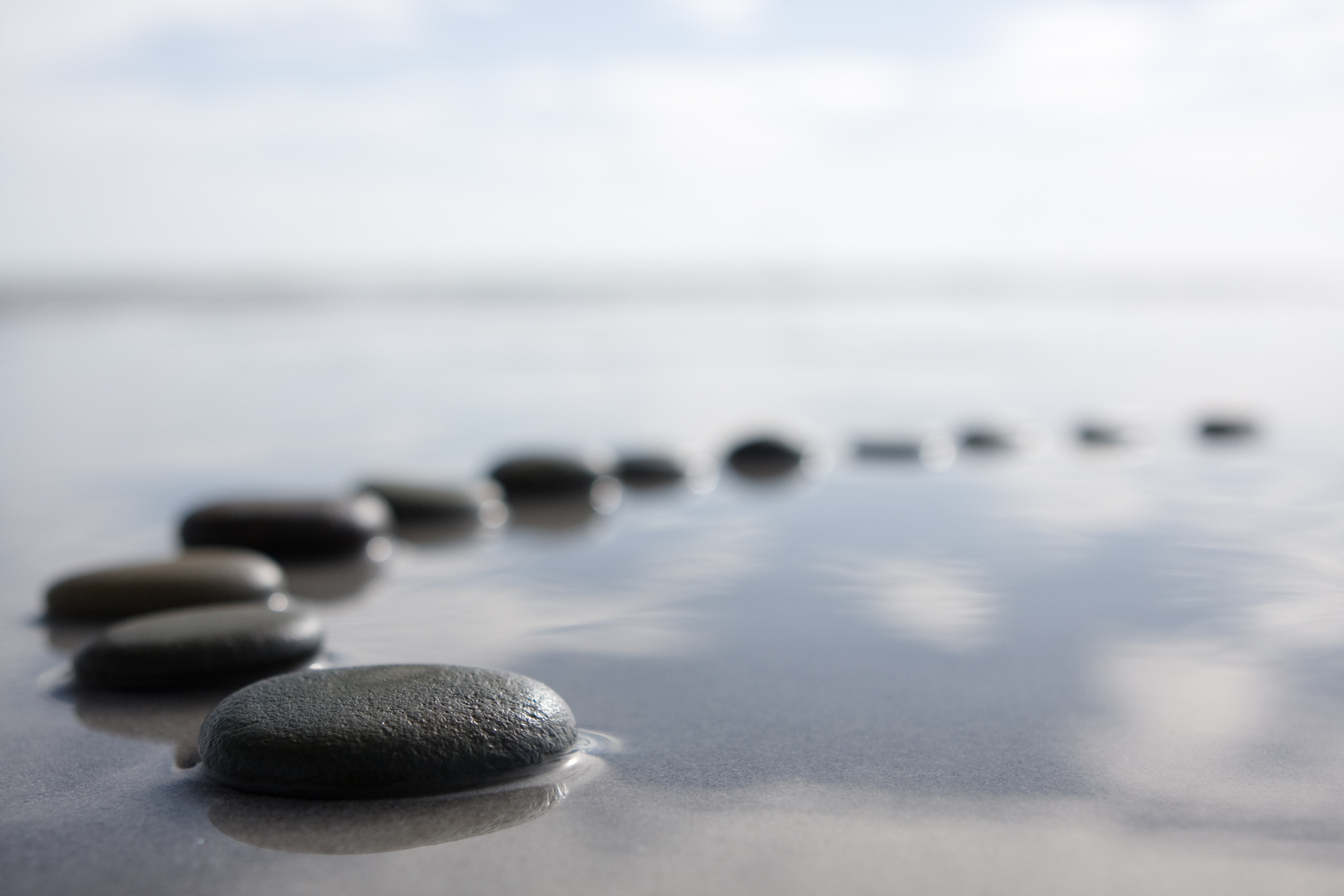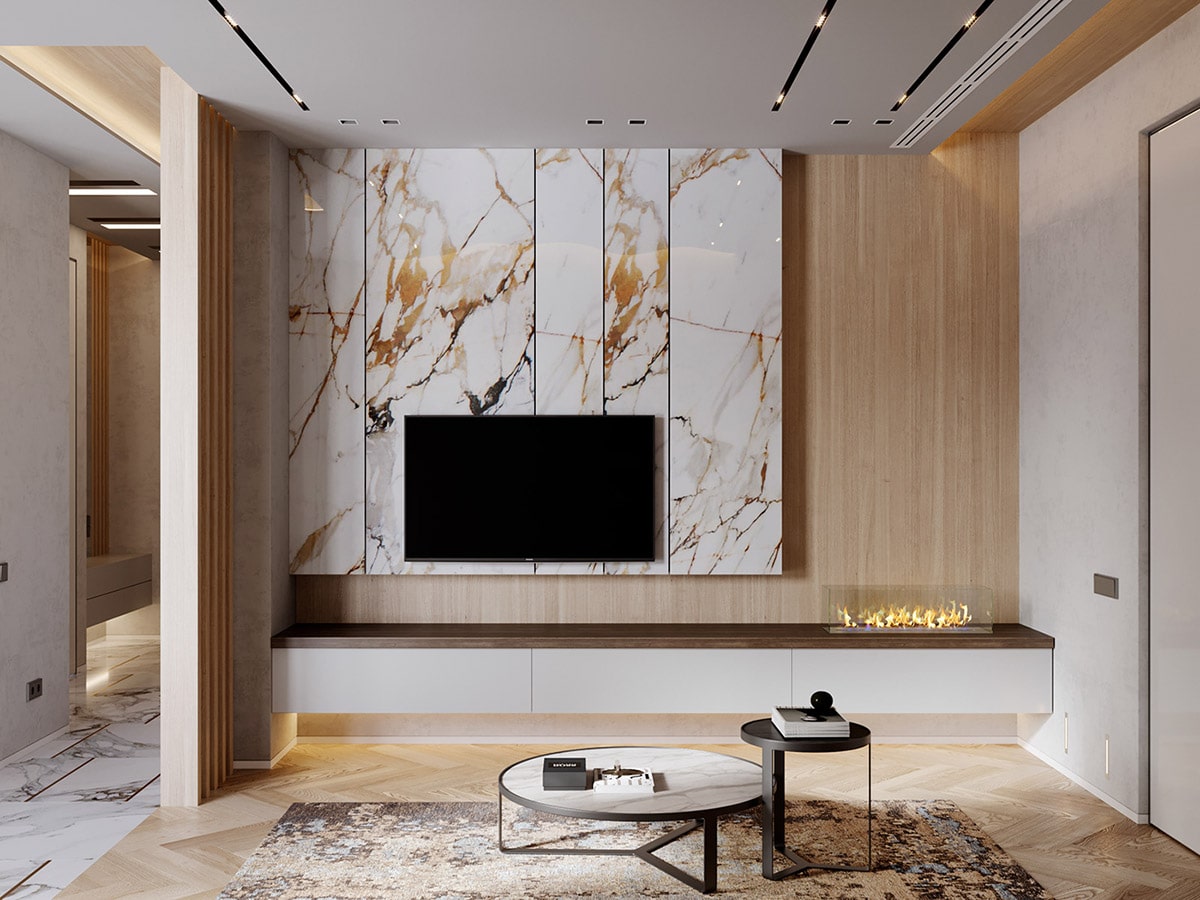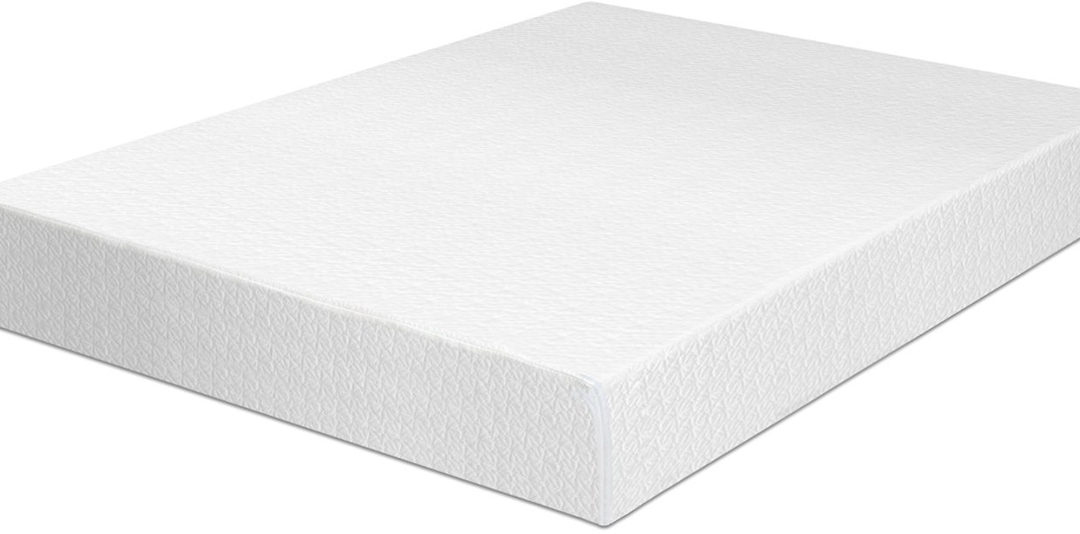Minimalism has been warehousing a lot of attention in the interior design world for years and is seen as a classic by many. A minimalist home takes this same ethos and applies it to an entire house. Also sometimes known as a modernist house design, this house is as much about life within it being kept simple and refined, as it is about the outwardly aesthetics – pared down materials and structures that are simple, non-cluttered, and always stylish. When it comes to the design of a minimalist house, it’s all about the aesthetic of the walls, the materials and the furnishings that make it an attractive yet rustic house. The wall designs are usually quite basic with little to no artwork or decoration. Natural materials like stone, wood, and brick are favoured over metal or plastic. Simple accent colours in navy and black can contrast well against the neutral backdrops. Furniture should also take on the minimalist aesthetic with the materials being the same as walls. Natural, lightweight materials like wood and steel frame sofas that don’t take up too much space. Further pieces like chairs and cabinets come with bent metal frames and hand-dyed leather to give a classic look. A simpler approach to decor is always taken when it comes to a minimalist house, with a few statement pieces like a chandelier or a statement chair, and plants adding focus and contrast.Minimalist House Design
The Scandinavian design is based on functionality, minimalism, and simplicity - key features that can help create a house design that is contemporary, stylish, and calm. The clean yet warm lines that Scandinavian designs bring, create a cozy ambiance for the home. It involves using light colours and a mix of natural raw materials, including wood and gravely textured surfaces to create a simple yet sophisticated interior. When it comes to a Scandinavian house design, the walls have a simple yet homey feel with whites and warm greys being the main colour palette. Wood is used to create furniture pieces, while minimal yet bold colour accents come from the artwork, rugs, and hues from nature. Natural vegetation like potted plants are the main forms of decoration in this type of interior. Using natural light complements the simple yet cozy vibes that Scandinavian designs give off. Furniture pieces are created with simple frames toughened by the use of softer and warmer woods such as elm and ash, with a mix of metals, marbles, and velvets being used as aesthetic filler. Textures speak a lot in a Scandinavian house, with chunky knits, velvet covers, and sheepskins adding depth and warmth to the area. Focusing on minimalism, this house design is all about the feel of simplistic chic that brings you the look and character vastly different from the other characteristics.Scandinavian House Design
When it comes to a contemporary house design, the main features are the modern straight lines that you will find in the furniture pieces and inside the area. Materials used are mostly nature, while also adding a touch of sophistication in the mix. Clean and simple yet luxurious, the contemporary house design gives an aura of immutable, timeless beauty. When it comes to the aesthetics of a contemporary house, neutral and understated colour palettes are used to create a sophisticated calming atmosphere. Light toned hardwoods such as oak, maple, and walnut are used as materials for the furniture pieces, as the dark and hard shapes are contrasted against the bright walls. Tones from nature like green, brown, blue, and white are used to bring in a homely texture. A blend of classical yet modern art or mirrors will bring a focus to the living area were like wicker, rattan. Mirrors add a spark of class to the modernity. Metal frames with polished edges and sleek designs make up the furniture pieces, while modern linear outlines form the base of the structure. Leather, velvet, wool, and cotton take up a large part of the textile composition. Neutral coloured carpets and rugs are used with strong geometric shapes to add texture.AFurnishing should be kept to a minimum and simple for a contemporary, yet luxurious look, as too much decoration would make the design chaotic.Contemporary House Design
This type of house design follows its own style featuring a decor double-edged sword. It crossovers the boundaries of both modern and urban decor. It takes the concept of rustic and industrial styles and truly puts its own unique spin on them. The aim of this is to combine contemporary industrial and a traditional rustic touches. What makes the industrial house design stand out is the presence of raw materials like aged woods, metals, and cement. The walls are usually kept basic, with raw brick being the primary material, and metal trims to give the industrial feel. Natural tones and hues of greens, blues, and greys match organic materials with industrial touches. To have a subtle touch of a rustic feel, bump things up with some exposed wood. Furnishings can be either metal or wood, but the use of metalsbound with glossy smoothness, give more of an industrial feel. Accents like cushions and throws will bring in a bit of colour. Choosing art and wall coverings should be a focus of the area. Highlighting old aged posters, or even art with an old time feel, makes the room much more than just randomly putting some artworks up on the wall. Final touches like a modern lamp, or industrial styled pendants can add character to the area.Industrial House Design
A rustic house design implies the feel of off-the-grid charm with rustic colours and textures like wood, stone, and metal being used to create a cozy, yet homely atmosphere. Woods such as beech, birch, cedar, and hickory all connote a strongly rustic feel, while softening the space with natural elements like warmth and charm. Rustic interiors involve a variety of natural materials and textures to create an enjoyable atmosphere. The use of wood in rustic house design comes as no surprise, but can enhance the feel with the right trees used. Materials like natural woods like pine, oak, hickory, ash, and maple will give the room a cosy, wild, and natural atmosphere. Stone and brick have the rustic look and are quite popular among the rustic family. Adding plants for a natural feature can make the area all the more calming. When it comes to furniture, leather pieces with wooden frames and legs match up well with the rustic theme, as the harshness of metal is usually absent in a rustic house. Unlike a minimalist house layout, the heating and cooling fixtures should be tucked away or placed out of sight as to give an ‘old-world’ look. More emphasis is put on keeping the area natural, which is why a rustic house feels like a home from the olden days.Rustic House Design
Modern house design is known as a sleek and minimal form of decor. It is an aesthetic of design that breaks away from traditionalism while keeping certain aspects of beauty and form. Its sleek design involves the use of large windows, open spaces, and minimalistic furnishings. The main elements of a modern house design are large, open floorplans with minimal walls and furniture. Natural materials like stone, wood, and brick are used to make up the frames and facades while the interiors are kept simple but highly organised, usually with a muted colour palette, to give off that modern yet homely feel. The furniture is usually quite minimalistic with an industrial edge. Vinyl furniture, tufted leather seating, and sleek steel frames can be seen. All the furniture pieces can stand out from the walls and the flooring. Organisation is a must to make a modern house look stylish. Floating shelves and concealed storage can take up wall spaces and corners to create both an organised and minimal look. The use of natural lighting gives off a calming atmosphere and acts as a major form of decor. Wall covers like curtains and blinds should be light toned to match the subdued furnishing, and the area can be further enhanced with house plants which bring a touch of serenity to the area.Modern House Design
Mid-Century designs can be found in our modern designs today. An amalgamation of classic elements and contemporary lines, Mid-Century designs are all about the use of wood, geometric shapes, and modern colours. Its golden age began in the late 1940s – showcasing an entirely different aesthetic of design. Mid-Century designs can be found quite commonly in furniture, but are also used in houses. When it comes to creating a Mid-Century house, wooden surfaces, along with leather and tile are used to create the modern feel. The colour palette is limited to greens, blues, whites, and beige, and will usually include the odd touch of yellow or gold. The use of structural geometric shapes in furniture pieces such as chairs, tables, cabinets let you create a sophisticated, yet less flamboyant design. Both organic as well as linear patterns are also used. Accent colours come from the floorings and walls, with materials ranging from slate, tile and woodgrain to make the area look bold yet roomy. Luxurious fabrics like leather, velvet, and wool make up a little portion of the textile scene, while hues like brown steel, glass, and chrome are used for the service fixtures and handles. Unique Mid Century style lamps and light fixtures bring a soft yet vibrant atmosphere to the area.Mid-Century House Design
Transitional house design is the perfect balance between modern and traditional use in a home. It takes elements from different cultures and designs and mixes and matches them to create a unique and captivating home. Transitional home designs sometimes have a simple statement piece like a piece of artwork or a feature wall, while using some classic pieces like armchairs for the furnishings. When it comes to colours for a transitional house, neutral colours and earthy tones are usually the main palette. Rich and dark woods are used as flooring and furniture pieces. Gardens with stone pathways add a rustic yet presentable feel, while clean lines and metal accents are used to create a more modern feel. Upholstered furniture pieces of all sizes in sticking tones match the metal accented hardware to make the area feel more like home. Lighting should be used to fill the gaps, with floor lamps and table lamps usually suiting it best. Keeping the colour consistent between the furnishings and the decor gives a sense of cohesiveness when travelling through the room. Natural materials and features that tie in well with the furniture, create a textured environment with a lasting feel.Transitional House Design
The farmhouse interior design is a blend of rustic country vibes and modern and classic interior design. With the broad range of styles within this house design, it can often make it quite difficult to nail down. Industrial pieces meet the mark in farmhouse interior design to balance the rustic nature of the space. Colours used in the farmhouse house design range from bright whites to soft tans, with bold but homey statements like yellows, blues, and reds. Natural coloured woods such as oak, cedar, and walnut create a cosy atmosphere, with white painted wood being the perfect complement. The flooring gives of a classic warmth and charm with natural stones and carpets being used in the area. Wall coverings like barn siding give a distinct look, while vintage wood planks add a touch of rustic nature. The furniture is homelike and warm with pieces of cotton upholstery and unprotected metals giving an old-fashioned dreamy feel. Natural metal, and aged wood are the main players in the area, with shelves and cabinets containing pottery and copper items also adding to the aesthetics. A touch of greenery adds a serene element to the area as a final touch.Farmhouse House Design
Homestead house design is an entirely different aesthetic from the industrial and contemporary designs. This type of style has its roots in the rustic country look, bringing a once-family-run home into the modern era. With wooden floors, antique furniture, rugged fabrics, and hints of crockery, the Homestead design feel reflects the essence of comfort. The walls in a homestead house are decorated with white washed wood boards, inked walls, mural walls, and even graffiti for a rustic country feel. The flooring should also reflect the olden days lifestyle, with yellow walls, natural stone, and terra cotta being the main materials. In the way of furniture,antique pieces like wooden chairs, metal stools, and wall cabinets are used, with each piece having a distinct purpose and character.Homestead House Design
What is Neutral House Design?
 Neutral house design is an approach to interior and exterior design that emphasizes a careful balance of elements. It elegantly combines the earthy beiges and grays of neutral color palettes with natural materials for a timeless look. Neutral design elements such as stone, wood, metal, and leather are combined to create an inviting, warm atmosphere without overwhelming the senses.
Neutral house design is an approach to interior and exterior design that emphasizes a careful balance of elements. It elegantly combines the earthy beiges and grays of neutral color palettes with natural materials for a timeless look. Neutral design elements such as stone, wood, metal, and leather are combined to create an inviting, warm atmosphere without overwhelming the senses.
Choosing Neutral Colors and Textures
 Neutral colors
such as whites, greys, beiges, and light browns add warmth and depth to a home’s decor without overpowering the space. Harmonious color combinations are key for neutral house design, allowing for texture and materials to be the main focus. Adding
subtle patterned accents
, light fixtures, and other textiles can inject personality into a neutral design.
Neutral colors
such as whites, greys, beiges, and light browns add warmth and depth to a home’s decor without overpowering the space. Harmonious color combinations are key for neutral house design, allowing for texture and materials to be the main focus. Adding
subtle patterned accents
, light fixtures, and other textiles can inject personality into a neutral design.
Lighting
 Lighting plays an essential role in a neutral house design. Natural lighting is celebrated through windows and skylights, while pendant and wall sconces add a necessary layer to the space. Wall art and mirrors can further add to the ambiance by reflecting the natural light.
Lighting plays an essential role in a neutral house design. Natural lighting is celebrated through windows and skylights, while pendant and wall sconces add a necessary layer to the space. Wall art and mirrors can further add to the ambiance by reflecting the natural light.
Materials
 Nature-inspired materials add texture and amplify the neutral design. Natural wood, wicker, and seagrass furniture pieces blend perfectly into the design. Stone and metal surfaces more seamlessly into the space. To enhance the atmosphere,
bring in house plants
to promote a sense of life and energy in a neutral home.
Nature-inspired materials add texture and amplify the neutral design. Natural wood, wicker, and seagrass furniture pieces blend perfectly into the design. Stone and metal surfaces more seamlessly into the space. To enhance the atmosphere,
bring in house plants
to promote a sense of life and energy in a neutral home.
Incorporating Neutral House Design
 Neutral house design can create a healing and calming atmosphere in any space. And because of its timeless appeal and flexibility, it can easily be integrated into various established design schemes. For those who are looking to create a peaceful oasis in their home,
neutral house design
is an ideal option.
Neutral house design can create a healing and calming atmosphere in any space. And because of its timeless appeal and flexibility, it can easily be integrated into various established design schemes. For those who are looking to create a peaceful oasis in their home,
neutral house design
is an ideal option.































































































































